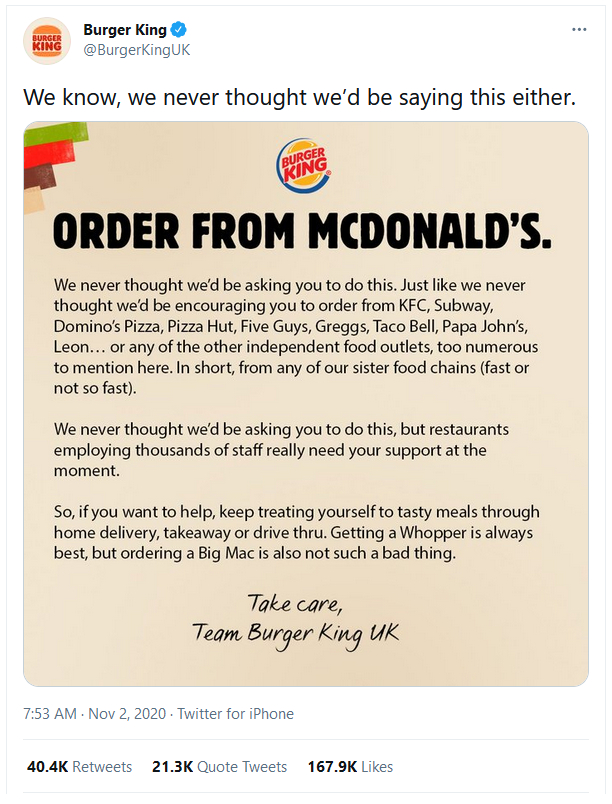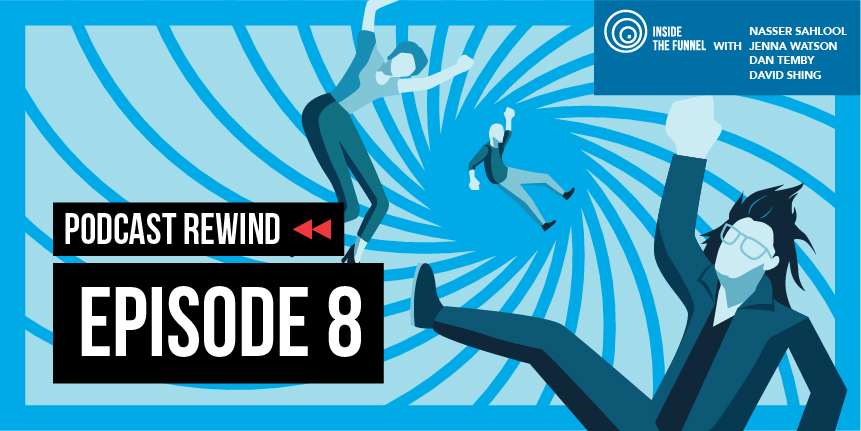David “Shingy” Shing is always on the front foot. In fact, the only thing that precedes this modern marketing icon is his reputation as a forthright futurist, speaker, creative director, strategic digital consultant, entrepreneur, and all-round raconteur.
We caught up with the “Digital Prophet” to talk about his colorful career, the imminent death of third-party cookies (which we’ll explore in our exclusive webinar on June 15), and how he’s educating big brands about the unique digital and social opportunities ahead. These are his hottest takes.
-
“Digital Prophet” was intentionally provocative
A designer by trade, Shingy decamped from Australia to Europe to forge a design-meets-tech career just as the dot-com boom was beginning to quieten. He joined AOL as Head of Media and Marketing for a handful of new European territories, but soon found his true calling: talking about marketing as a whole—not just AOL’s efforts therein—on TV shows, with industry publications, and at some of digital’s most prominent events.

Speaking became Shingy’s de facto gig, with AOL receiving exposure as a byproduct, but he wasn’t interested in becoming an “evangelist”, as Google and IBM termed it. Instead, he channeled his inner antagonist to become the self-ordained “Digital Prophet”. It wouldn’t be the last time he caught the industry’s attention…
In 2011, Shingy boldly proclaimed that “apps are dead”. In retrospect, he says that iOS was in need of a serious overhaul at the time; it was proliferated by unimaginative apps that paled in comparison to the mobile web. A few years later, Shingy appeared on MSNBC’s The Cycle to predict “defriend and unfollow” as the next big thing in digital. His comments briefly trended higher than the 2014 Winter Olympics, bringing out trolls in their thousands. But Shingy says the experience only made him stronger.
-
Empathetic brands pivoted best in the pandemic
Advertisers found themselves in a rut when the pandemic truly set in. Too many ad executions relied on sombre aesthetics, retold origin stories, or hollow attempts to humanize (the latter being especially egregious from brands that weren’t even on the right platforms to interact with their audiences).
Shingy believes the best-performing brands were the ones that didn’t say anything. He praises Cadbury’s revival of the orange-flavored Twirl as a great example of a brand listening to its customers, and gives a special shout out to Ben and Jerry’s for delivering ice cream by drone at the height of local lockdowns.
KFC broke new ground during the pandemic by challenging people to recreate its celebrated herb-and-spice blend—later poking fun at the worst user submissions—but the Shingy Award for Best Pandemic Ad goes to Burger King UK, which encouraged its customers to order from McDonald’s (and other food chains) to support the industry’s thousands of at-risk employees.

-
CMOs aren’t ready for the end of third-party cookies
A handful of CMOs recently confided to Shingy that the pandemic has shifted their focus from product innovation to making their audiences feel reassuringly comfortable. But this rose-tinted nostalgia seems to have made its way into the IAB’s State of Data 2021, which reports that a large majority of marketing decision-makers do NOT think their company’s revenue (76%) and equity/resources (69%) will be impacted by the loss of third-party cookies. Shingy’s reaction: “Are you off your rocker?!”
Despite this apparent shortsightedness at the executive level, we’re witnessing the beginnings of a historic land grab for first-party data and a backlash against social currencies. Smart brands are using social mining to get people away from third-party platforms and onto their own.
As our cookieless future takes shape, it is increasingly unthinkable that multibillion-dollar businesses would push their audiences towards platforms they don’t own themselves. Such brands must instead prioritize first-party data, collecting it in a way that makes the benefit abundantly clear to increasingly skeptical users.
-
Data has an image problem—it’s not sexy enough
Shingy’s issue with data is not only that it’s rarely distilled into objective, actionable insights, but that these insights that are never elevated to the top of the forecast funnel. His solution: rationalize your data and use it to quickly amp up ideas. If it works, spin it into new initiatives; if it doesn’t work, shut it down and move on.

He cites Amazon as the perfect example of a company built around data-driven decisions. When the ecommerce giant revealed tentative plans for delivery by drone, dozens of competitors followed suit. But by the time its rivals had prepared their drone fleets for take-off, Amazon had already listened to its data and moved on to a better idea: on-demand book printing at the point of purchase.
Testing and growth hacking are not considered sexy, but they’re a critical part of translating data into insights into action. After all, consumer data tells brands what to do, but it doesn’t tell them how to do it. The how is now the institution of the modern marketer—and the closer that role is to data, the better the insights are going to be.
-
The great QR code comeback is not over yet
Speaking as a man whose business card once boasted both a QR code and an NFC chip, Shingy speaks from a position of authority when he says that Western cultures are miles behind the rest of the world in terms of contactless tech. But he also believes in the enduring power of the QR code, which has undergone a renaissance during the pandemic.
It’s not about the code; it’s the post-scan experience.
The modern QR code, says Shingy, is a masterpiece not only because it bridges offline-to-online activity but because it’s so easy to reprogram. If conversion rates for your QR-enabled direct mail campaign start to tank after the first 10,000 recipients, you can simply reprogram the code to do something else. The code is locked in ink but not in its dimension—and it remains a popular, practical mechanism for many of the world’s 3.6 billion smartphone users.
Like, subscribe, and enjoy!
Want to hear it direct from the man himself in his dulcet Aussie tones? Then it’s time to enjoy the company of one of digital’s most assertive-yet-articulate characters. Listen to Shingy, Dan, Jenna, and Nasser now on Spotify, Apple Podcasts, Google Podcasts, Amazon Music, or wherever you get your podcasts!




